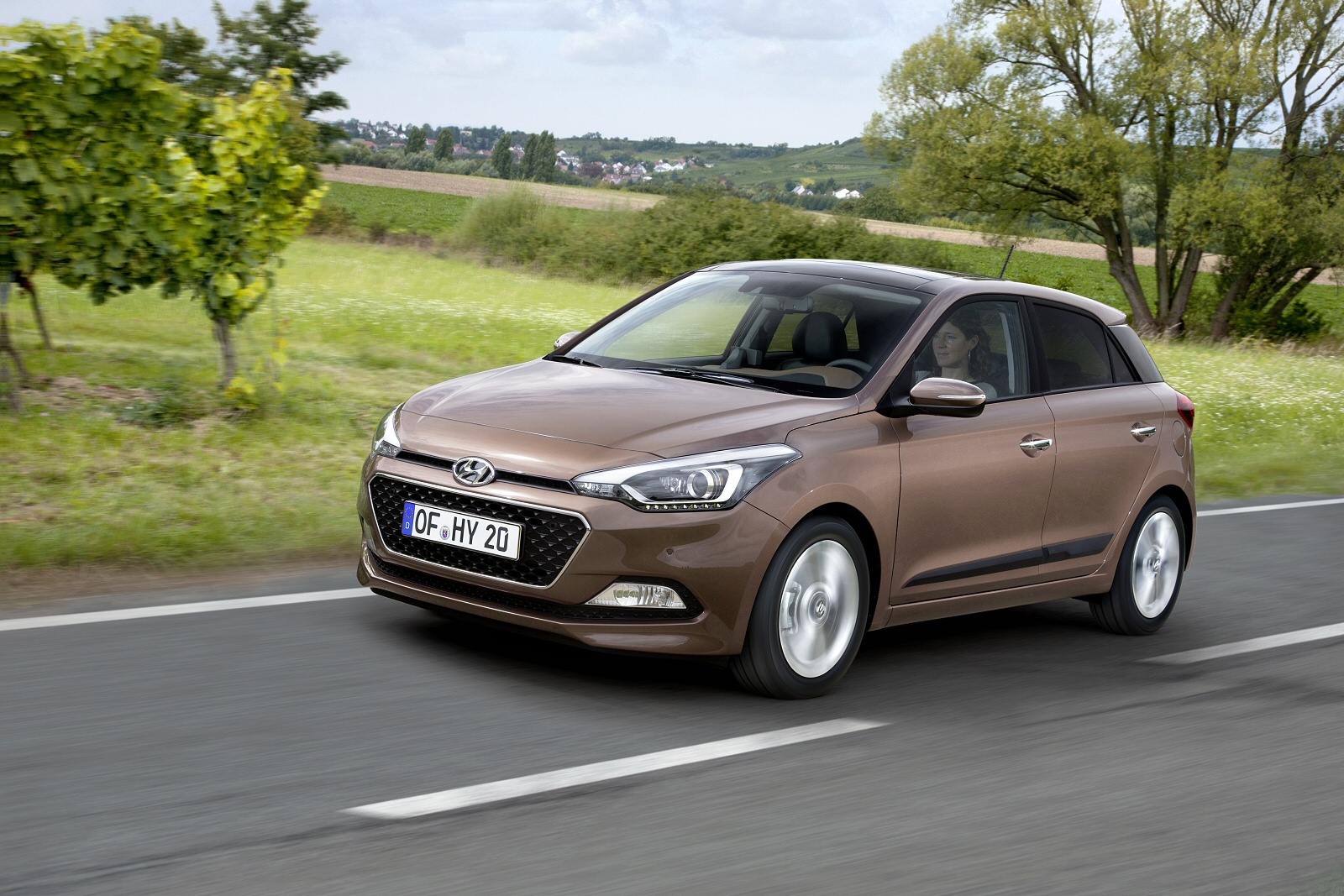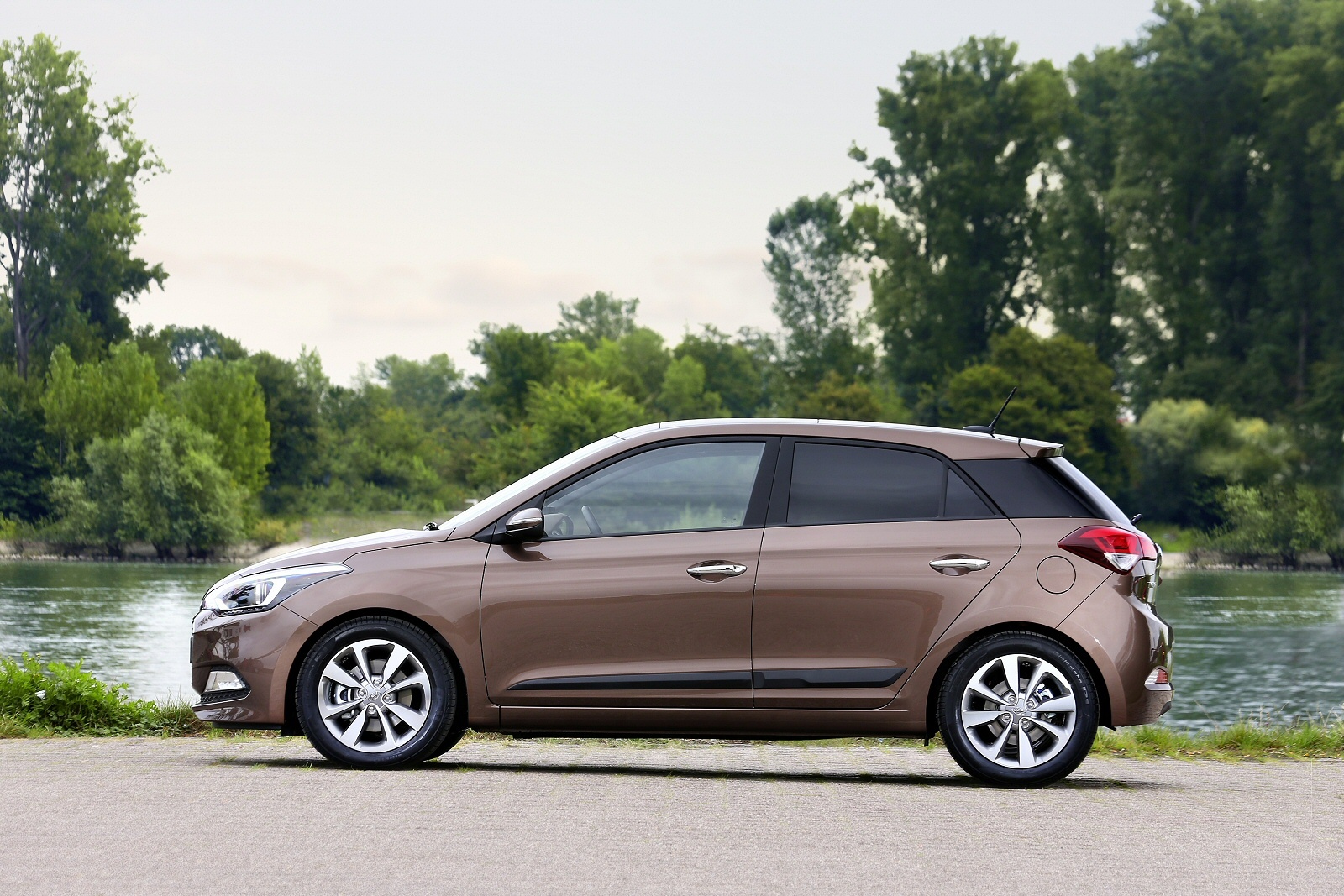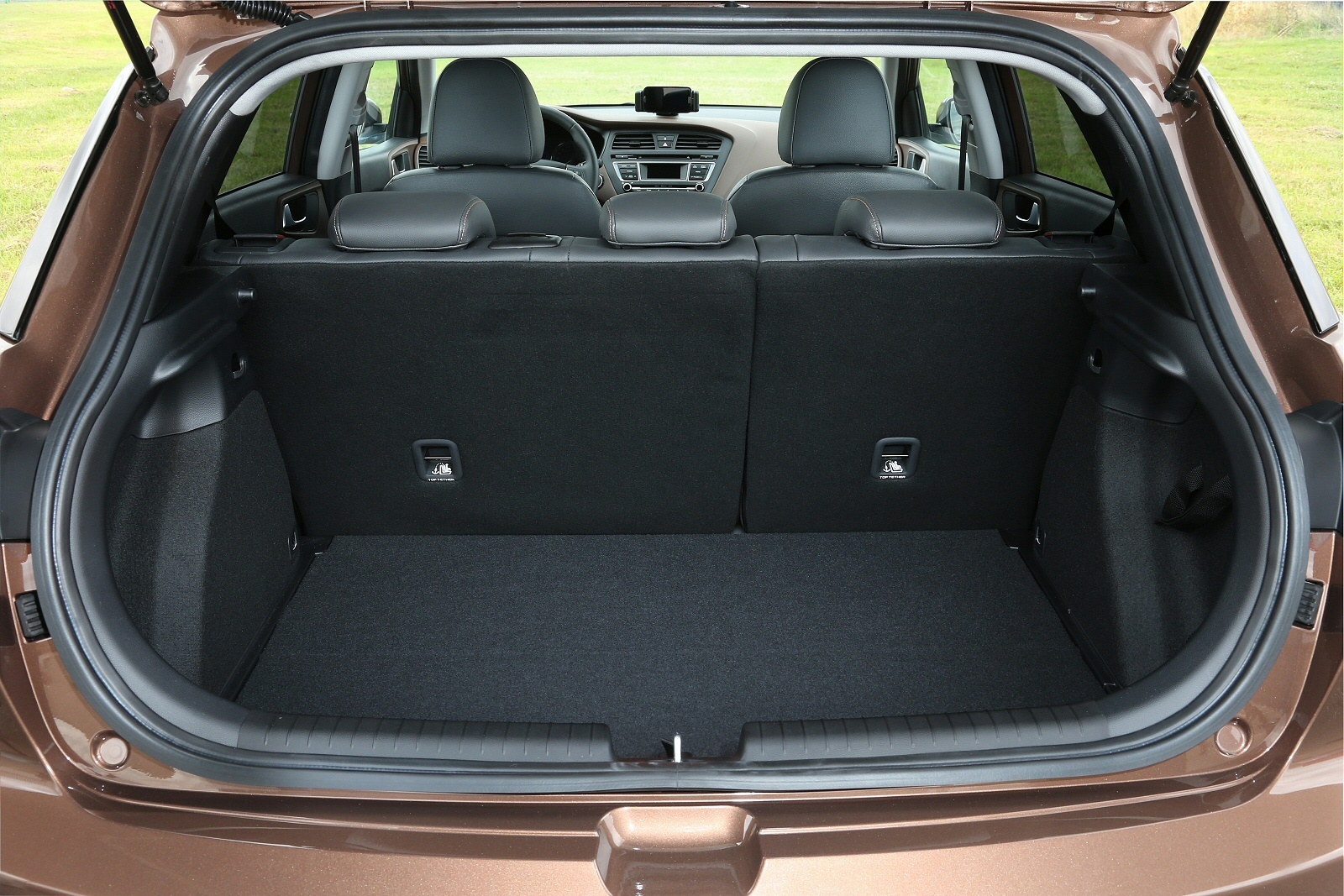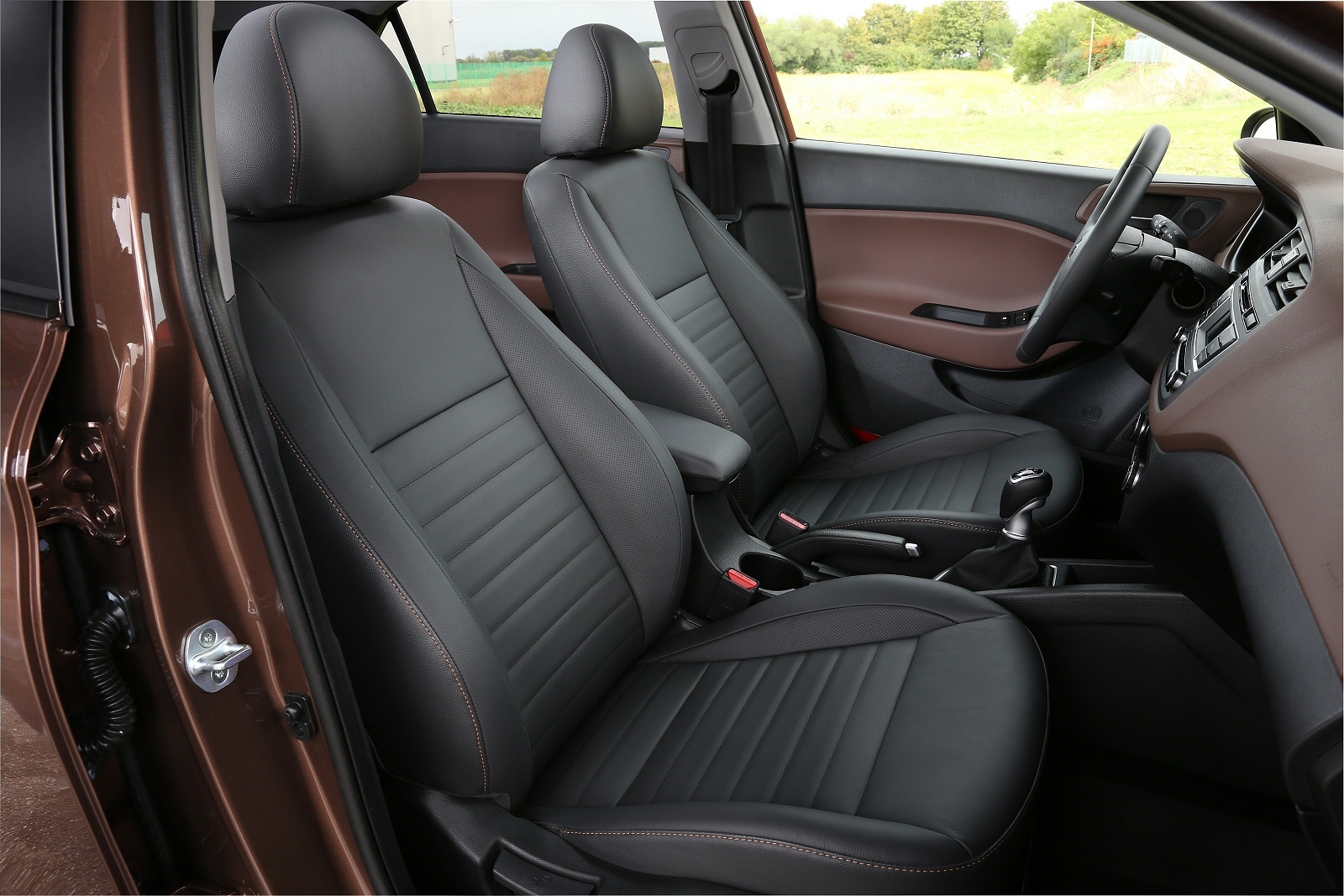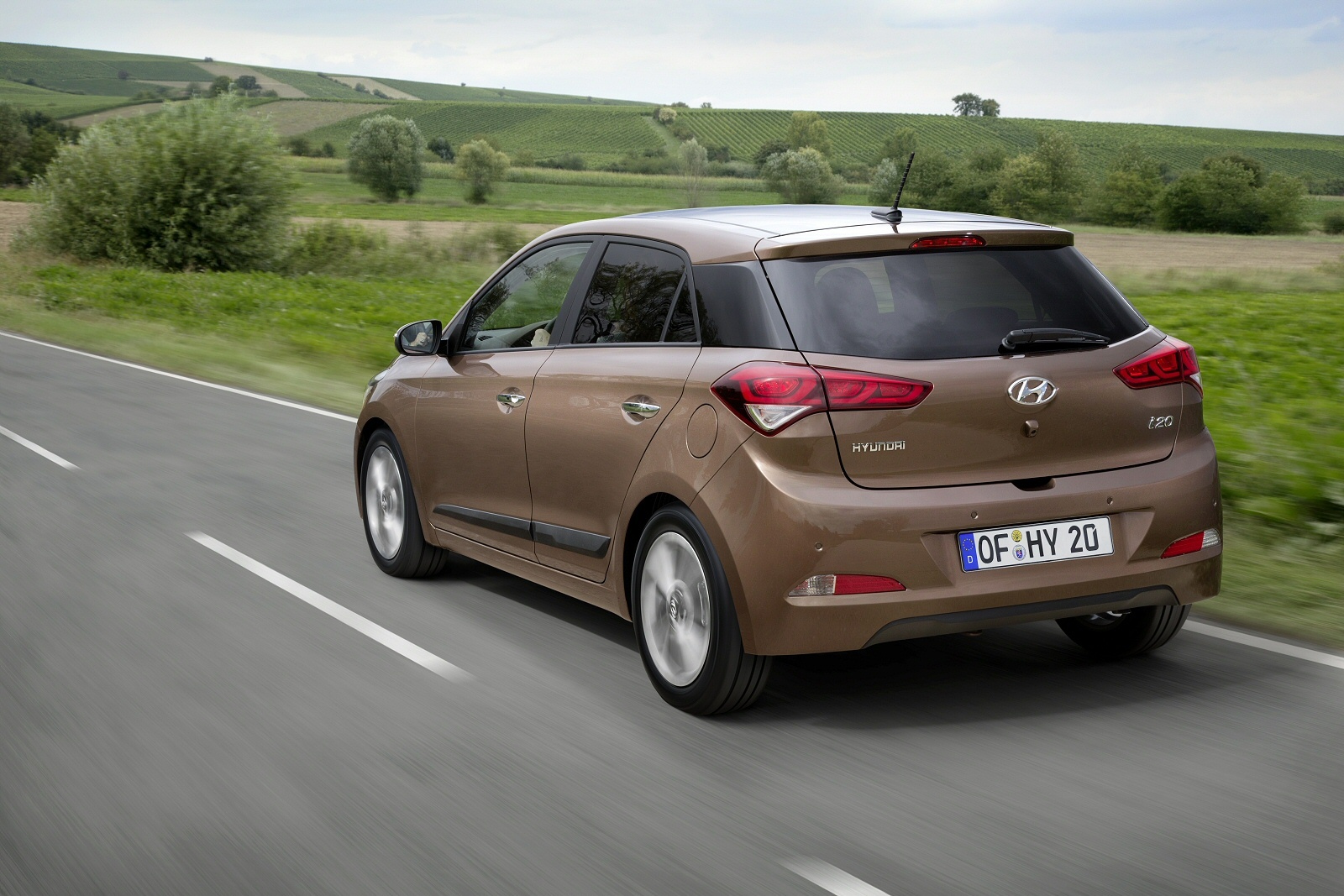The Hyundai i20 started slow but has built up genuine momentum. The latest model looks to keep that trajectory arrowing upwards.
The great thing about the i20 is that it’s a car designed by Europeans, in Europe, for European conditions, so it’s no surprise that we liked the way the last car drove.
This latest model should be no exception, the team in Russelsheim tuning the fully independent MacPherson strut front suspension and semi-independent coupled torsion beam axle at the rear for our roads. This i20 is a bigger car, so the suspension has been tuned to cope with the bigger footprint, the stiffer superstructure and the optimised weight distribution.
The steering system is now a brushless a/c electric motor-driven steering system that requires 2.7 turns lock-to-lock for a tiny 5.1m turning radius – making the car easy to navigate in town.
Hyundai has announced a wide range of engines, including 1.25 and 1.4-litre petrol units and 1.1 or 1.4-litre diesel powerplants as well as five or six-speed manual transmissions or a four-speed auto box.
Of all the cars in its line-up, the i20 has traditionally been Hyundai’s most conservatively styled. Early design renderings for this second generation car looked a good deal more adventurous, but in the metal, it’s been toned down. It’s still a handsome piece of penmanship though, carried out under the auspices of ex-Audi design boss Peter Schreyer. The front end looks cleaner and wider, while the area around the C-pillar and rear wheel arch has elements of Golf Mk5 about it, which is no bad thing.
The interior is really smart, with the design maturity of a much bigger car. Interior space has improved, with combined front and rear legroom of 1,892mm, a class-leading figure and comparable with the space of some cars from the class above. The wheelbase is 45mm longer and additional legroom was created in the front by raising the height of the dashboard and moving the glovebox and surrounding components forward.
Cargo capacity has also been enhanced, making the vehicle one of the most accommodating in the segment. The boot volume has increased from 295 litres to a class-leading 326 litres. The rear bench folds flat, meaning capacity is boosted to 1,042 litres with the rear seats folded.
Pricing sits mainly in the £11,000 to £17,000 bracket, typical for a supermini of this kind. There are five trim levels: entry-level ‘S’ with its ‘S Air’ and ‘S Blue’ options, then ‘SE’, ‘Premium’ and ‘Premium SE’. All get electric front windows, remote central locking, tinted windows and RDS radio with USB.
And beyond that? Well at first glance, the i20 looks to have some features that aren’t common in the supermini sector. A full-length panoramic sunroof that can both tilt and fully open is an interesting feature, as are two comfort-orientated technologies first fitted to the Hyundai i40: automatic windscreen defog and a heated steering wheel. A dashboard-integrated seven-inch satellite navigation system, automatic folding door mirrors, front and rear parking assist and smartphone docking integration are offered. USB and auxiliary connectivity is fitted as standard and can be specified with an integrated My Music function, along with Bluetooth hands-free, where up to 1GB of music can be stored and played.
Safety equipment includes six airbags on all models, a Lane Departure Warning System, standard stability control tuned to be as unobtrusive as possible, and a Hill Start Assist Control standard to prevent roll back.
Hyundai has gone to some length to improve the efficiency of the latest i20, reducing weight where possible and improving the drag coefficient from 0.32 in the outgoing car to 0.30 in this model. The latest chassis has been developed using more lightweight, high-strength steel to yield stiffer torsional rigidity. The body structure is composed of 42% lightweight, ultra high-strength steel, compared with 16% in the outgoing model. Efficient electrically-assisted steering also negates the requirement to run a pump at all times.
It’s early days yet, but the omens for the Hyundai i20 look promising. Much will hinge on the finer points of pricing, specification and efficiency, but the Koreans look to have got the fundamentals right. The i20 has taken some time to bed in with European buyers but this latest model’s impressive interior quality and assured styling only serve to reinforce the point that Hyundai isn’t content with being seen as an equal to the likes of Ford and Vauxhall. They’re looking beyond that benchmark and eyeing Volkswagen.
Only five years ago, we’d have probably suppressed a chuckle at that degree of chutzpah. These days we take Hyundai very seriously. Its product range speaks for itself, its accelerated development cycles have the rest of the auto industry in cold sweats and every model shows massive and tangible progression. The latest i20 is no exception.
Facts & figures
Model: Hyundai i20
Price: £11,000 – £17,000
Engine: 1.25 and 1.4-litre petrol units and 1.1 or 1.4-litre diesel powerplants
Performance: 0-62mph in 11.6 seconds; top speed of 114mph (1.4-litre petrol unit)
Economy: 51.4mpg (1.4-litre petrol unit)
CO2 rating: 127g/km (1.4-litre petrol unit)
